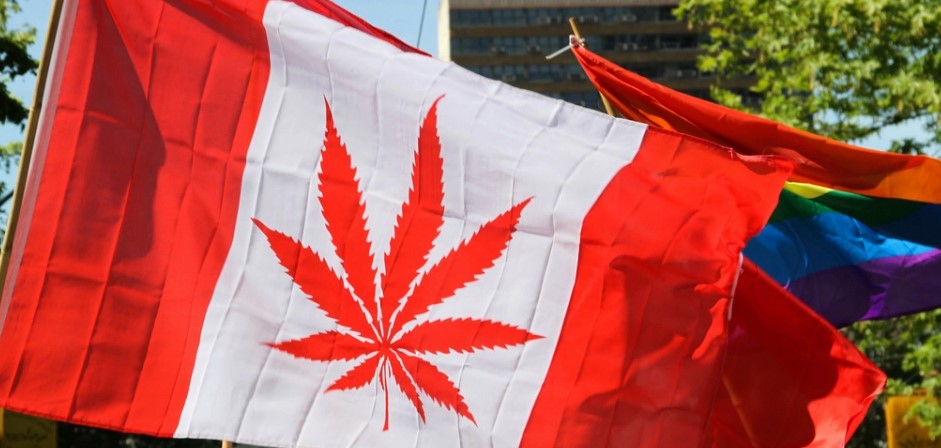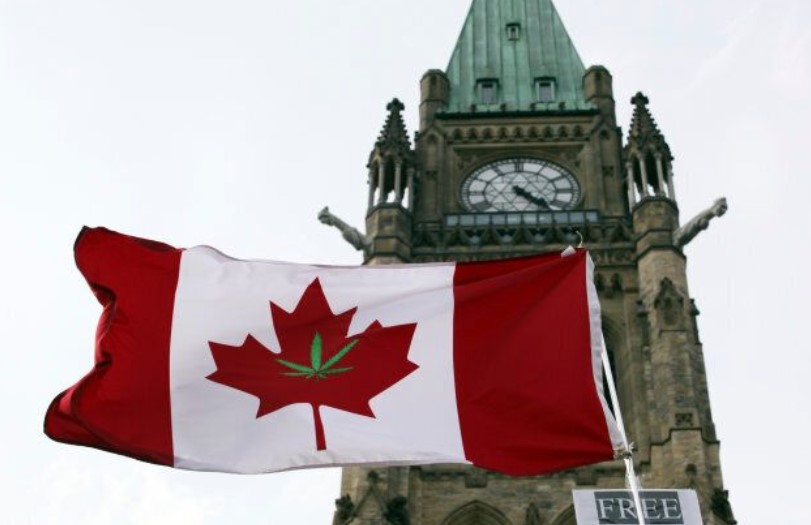Uncategorized
Cannabis Prohibition in Canada
regrettably, similar to other countries with restrictive drug legislation, the origins of Canada’s drug laws were based on discrimination and disproportionately impacted Indigenous, Black, Asian, Latinx and vulnerable communities.
Canada’s initial attempt at banning alcohol was mostly due to the anti-Chinese racism that had become common in British Columbia during the construction of the Canadian Pacific Railway. At that time, a large number of Chinese immigrants settled near Vancouver.
The Opium and Drug Act of 1908 made it a criminal offense for Canadians to sell, manufacture, or import opiates and cocaine outside of approved medical use. The law’s implementation resulted in more arrests and penalties inflicted on Chinese Canadian communities. The moral panic over illegal drug use spread throughout the country, leading to alarmist media coverage that created negative social stigmas around drug users which are still prevalent today.
Emily Murphy’s 1922 book The Black Candle, which aimed to rally public support for stricter drug laws, succeeded in its mission. The book was written by a suffragist and first female magistrate, so it encapsulates the Canadian public’s perception of race and drug use at the time quite perfectly. Notably, it also categorically defined addiction as a legal issue as opposed to a public health concern.
The 1908 Act prohibited other drugs and cannabis became a scheduled substance in 1923 when drug legislation was combined into the Act to Prohibit the Improper Use of Opium and other Drugs.There is no record that the Act was ever discussed or debated in Parliament.
In 1929, the Opium and Narcotic Act was established to set strict punishments for those caught using, possessing or selling drugs. The legislation would be the foundation of Canada’s drug policy for the next 40 years. In 1961, at the start of the psychedelic 60s when youth culture’s recreational drug use began impactful, the Narcotic Control Act was put into place. This made it an indictable offence to possess cannabis (and other drugs), and increased trafficking penalties from seven to 14 years imprisonment time.
The Act also enforced elements from the Single Convention on Narcotic Drugs, an international treaty to which Canada was a signatory. This would later be supplemented with further legislature regulating activities related to psychotropic substances like MDMA and LSD. But as more Canadians with clean records were getting arrested,the government launched the Le Dain Commissionto investigate drug useage. The Commission advocated gentle punishments fordrug users, but prohibition remained unchanged.
In 1996, the Narcotic Control Act was repealed and swapped out with the Controlled Drug and Substances Act. This new act lessened penalties for those caught in possession of cannabis. Today, that act is still intact but has been amended multiple times over the years.
Indigenous cannabis remains in federal vs provincial law limbo
The Cannabis Act was supposed to legalized weed for everyone in Canada, but it ignored the rights of Indigenous people. Groups were angry that there wasn’t any consultation during the development stage, and even more upset to see that the legislation made no provisions to protect Indigenous sovereign, inherent, and treaty rights as they relate to cannabis.
The National Indigenous Medical Cannabis Association (NIMCA) strongly criticized Bill C-45, accusing the government of developing the legal framework without consideration for the unique situation of Indigenous people. “Once again, Canada is proving it is not onside with First Nation and Indigenous peoples and our sovereign and Inherent rights. The current Liberal government promised to respect our Inherent, treaty and land rights and to honour us with a nation-to-nation relationship,” reads the statement.
“Our sovereignty rights have been ignored and consultation with Indigenous peoples has not occurred on many issues, like cannabis. The proposed Bill C-45 is disrespectful and contrary to the promises that were made when this confederation was formed. Furthermore, since legalization took effect, there have raids conducted by the police on unlicensed dispensaries located on our treaty and unceded lands in different parts of the country.”
Terry Parker and the first medical cannabis exception
R. v. Parker was a major case in 2000 that many saw as the beginning of the end for Canada’s cannabis prohibition. The incident started when medical marijuana user Terry Parker, who has epilepsy and found that cannabis helped control his seizures, was arrested after police raided his home and discovered he had been growing plants. He was charged with violating the Narcotics Control Act, which has since been repealed.
After Parker’s initial refusal to stop growing and distributing his cannabis crop, he was faced with more charges following a second police raid that yielded even more plants. In court, Parker argued that consuming cannabis was vital for managing and treating his illness. Consequently, the charges against him were dropped, and he was granted an exemption from the law.
The Crown appealed Parker’s decision, but the Ontario Court of Appeal sided with Parker. According to the fundamental personal importance landmark decision, “Liberty includes the right to make decisions about Medication required for alleviating an illnesseffects of an illness with life-threatening consequences. Also, deprivation by means of a criminal sanction criminally accessing medication reasonably required for treating a medical condition that threatens one’s health orlife also constitutes as well security of curtailing person.”
The case resulted in the federal government drafting the Marihuana Medical Access Regulations in 2001, which allowed patients meeting certain criteria to consume and possess cannabis legally. It would take another seventeen years for legislation allowing adults to use cannabis to come into force.

Much like the United States, cannabis prohibition in Canada has racist roots
Canada’s long-standing history of cannabis prohibition is deeply rooted in racist thinking, and this has led to discriminatory treatments against people of colour that continue today. People from black, Indigenous, Asian, and Latinx backgrounds have been disproportionately arrested for cannabis-related offences despite the lack of race-based crime data in Canada.
The Ontario Human Rights Commission’s 2020 study concluded that Black people made up 34.4% of those involved in cannabis possession cases before it was legalized, despite representing only 8.8% of Toronto’s population. In other words, Black people were 3.9 times more likely to be charged than any other racial group at the time…
An analysis of five major Canadian cities in 2021 showed that except for one city, both Black and Indigenous people were arrested more often than average for cannabis possession.
Another analysis from the same University of Toronto found that this trend is not unique to one area in Canada, but appears across the entire justice system. The authors found that approximately twice as many Black youth are stopped by police compared to their white peers, and Black people were 50% more likely to be taken to a police station for processing post-arrest, “even taking into account criminal history and age.” In federal prisons, while black people only make up 3% of Canada’s population they are over-represented at 9%. Whereas Indigenous people who only make up 2% of the population ,are over-represented by nearly 500%, with 10%.
Although these data are relatively new, the trends they reveal are not. For example, both the 1995 Report of the Commission on Systemic Racism in the Ontario Criminal Justice System and 1991 Report on the Aboriginal Justice Inquiry of Manitoba found similar patterns in how BIPOC were treated by Canadian justice system decades ago.
Weed won but the work isn’t done: Mitigating the damage of prohibition
The end of cannabis prohibition did not signify the end of pot persecution for many Canadians.
A little over half a million people were charged with marijuana possession before it was legalized in Canada. In 2017, the year prior to cannabis legalization, more than half of all offences reported under the Controlled Drugs and Substances Act were related to cannabis use. Out of those charges, 74% percent were for possession alone.
The Cannabis Record Suspension program was unveiled by the Canadian government to little fanfare, as it was met with criticism for being too complicated and restrictive. Unlike a blanket pardon, people who want a suspension have to apply through the Parole Board of Canada. The only ones eligible are those charged with simple possession.
The government originally approximated that 10,000 Canadians would be qualified for a record suspension. However, as of October 2021, the Parole Board of Canada mentioned that only 484 applications had been sent since the program started in 2019. Although the destruction caused by prohibition can never be entirely erased, organizations such as NORML Canada, Medical Cannabis of Canada and Cannabis Amnesty are striving to reduce the negativity brought upon by thousands of non-violent cannabis offence criminal charges throughout our nation.
In addition to raising awareness, advocacy groups are also fighting for legislative changes such as the removal of the cannabis excise tax for medical consumers, the legalization of consumption lounges, and the right to grow cannabis at home in every province.
Did the Cannabis Act legalize weed for everyone?
Did you know that even though cannabis is legal in Canada, many consumers still can’t access or consume it? For example, most provinces allow landlords to smoking or vaping which makes it harder for people who don’t own their residences to vape or smoke. These provincial regulations disproportionately impact poorer consumers.
Most provinces ban or restrict smoking and vaping in public places, which often include sidewalks, streets, and local parks. As a result, people who are homeless, renters, and those with chronic medical conditions (especially those with limited mobility) are effectively banned from consuming the drug without risk of penalty.
Even legal complications can arise when buying cannabis from licensed retailers. For example, stores that sell alcohol permit minors to enter and shop with their parents; however, this is not the case for dispensaries selling cannabis products–solo parents may find it difficult to purchase these items in the legal market.
Although growing cannabis at home can be more affordable, residents of Quebec and Manitoba are not legally allowed to grow the four plants that other province’s residents are entitled to.
The Supreme Court in September 2022 will hear the on-going legal case against home growing in Quebec, and a decision has not yet been made. If the justices rule that home cultivation is allowed, those who rent their homes may still be restricted from growing cannabis as provincial legislation allows landlords (and some condo associations) to ban it in rental units.
Advocacy is just as important now as it was pre-legalization
It’s been four years since legalization, and though it might seem like the impact of nearly one hundred years of prohibition would be gone by now, that’s not the case. Systematic barriers take more time and effort to break down. To help with this process, Health Canada is asking for feedback from consumers about how things are going so far and what improvements could be made.This includes areas like consumption lounges, medical access, pardons, and creating an equitable industry.


